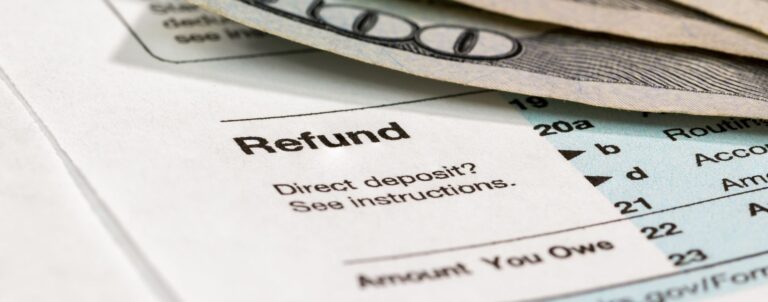Everything You Need To Know About IFTA
Running a successful trucking company means understanding fuel taxes and optimizing fuel spend. Most fuel taxes you pay as an interstate carrier are through the International Fuel Tax Agreement or IFTA. So let’s talk about IFTA: what it is, how to calculate your taxes, and how to file your quarterly IFTA taxes.
Please note that we are not tax professionals! This article contains informational content only, not an analysis of your company’s situation. Please consult a professional services provider, preferably a CPA, for additional questions.
Leer este artículo en español.
What is IFTA?
The International Fuel Tax Agreement is a shared policy among the 48 continental United States and Canadian provinces that streamlines the payment of fuel taxes by allowing motor carriers to register and file taxes in their home state and have the fair share of their taxes apportioned to the different states where they operated.
Under IFTA, interstate carriers are required to register for a license and file once per quarter. Before IFTA was in place, carriers had to get permits from each state and file fuel taxes separately. You can imagine that this was a lot of paperwork!
To register your vehicles with an IFTA license and get the decals, you need to go to your state department of transportation. You can also search for “IFTA license [your state]” on Google or another search engine and you should be able to easily find the process. This registration must be renewed every year.
While there still are some exceptions (I’m looking at you, Oregon), the vast majority of fuel taxes can now be paid once per quarter for all states.
How IFTA Taxes Are Calculated
IFTA taxes can be difficult to understand at first. Each state has its own fuel tax rates. While you pay a fuel tax at the pump, your actual taxable amount as a motor carrier depends on where you consumed the fuel (i.e. where you drove), not only where you bought the fuel.
Here are the data points needed to calculate IFTA taxes:
- Number of miles traveled in each state
- The fuel tax rate in each of those states
- Total number of gallons of fuel purchased in each state
Let’s look at an example.
Say you have a route between Detroit, MI and Cincinnati, OH three times per week. Going back and forth between these cities three times per week will give you a total of 18,950.4 miles during the quarter.
You always find the best fuel prices in Ohio at an average of $3.25 per gallon, so you never fuel in Michigan during the quarter. You spent $8,798.40 for 2,707.2 gallons of diesel. This means your truck got 7 miles to the gallon. Not bad!
Remember, because you purchased all your fuel in Ohio, you’ve already paid Ohio’s fuel tax rate. But you operated partially in Michigan. In essence, you’ve overpaid Ohio and underpaid Michigan for the fuel you consumed.
First, let’s find out how much in fuel tax you already paid. Take the number of gallons of fuel you purchased and multiply it by the state’s tax rate where you fueled. In this case, 2,707.2 gallons at the $0.47 tax rate per gallon in Ohio. So by the end of the quarter, you’ve paid $1,272.38 in fuel tax. Remember this number – it will come up again!
Next, of the 18,950.4 miles you drove, 3,600 were in Michigan and the remaining 15,350.4 were in Ohio. At 7 miles per gallon, that means you consumed approximately 514.3 gallons of fuel in Michigan and 2,192.9 in Ohio.
Finally, (we are getting to the end, I promise!) now find the amount of tax you should pay to each state:
2,192.9 gallons in Ohio x $0.47/gallon Ohio state fuel tax rate = $1,030.66
514.3 gallons in Michigan x $0.554/gallon Michigan state fuel tax rate = $284.92
Total fuel tax (adding the above numbers) = $1,315.58
Total taxes already paid at the pump in Ohio = $1,272.38
IFTA Fuel tax you owe at the end of the quarter = $43.20
That may seem like a whole lot of math, but most likely, your state has an online system to calculate this for you. Just make sure you keep track of where you fuel, how many gallons you purchase, and how many miles you run in each state.
Still, it’s important to understand how the tax is calculated so you can make better decisions about where to fuel.
Find a full list of all states’ fuel tax rates on the International Fuel Tax Association website.
How To File IFTA Quarterly Taxes
The process for filing quarterly IFTA taxes depends on your state, but the information you need to file is largely the same:
- Total miles you drove in each state – you can get this information on your ELD (electronic logging device). These numbers should represent all miles, including deadhead. Be sure to check that ELD logs are accepted by your state government and keep track of mileage reports just in case you’re audited.
- Total gallons you purchased in each state – if you have a fuel card, you may be able to get this information through your fuel card portal or from the receipts you get to your email. If you do not have a fuel card, you will need to gather your receipts, separate them by state and add the gallons of fuel purchased on each receipt. (These receipts should be post-purchase receipts, not pre-paid because pre-paid receipts don’t show the number of gallons.)
Pro tip: you should only pay tax on fuel you used to operate your truck. This does not include the gallons you purchased to fuel a reefer.
If you have more than one truck, file one return for all the trucks in your fleet.
Quarterly filings mean you file four times per year. The filing is due at the end of the month following the quarter, so April 30 for Q1, July 31 for Q2, October 31 for Q3, and January 31 for Q4.
How To Calculate The Cheapest Fuel Price
So what does this all mean for making decisions on where to fuel? A lot, actually!
Let’s go back to our Michigan-Ohio example. If you see that in Toledo, diesel is $3.15/gallon and in Detroit, $3.20/gallon, you might think that it’s a better deal to fuel up in Toledo. But it’s actually the other way around!
Remember, Michigan’s fuel tax is higher by $0.084. Discounting the state fuel tax, the diesel in Toledo actually costs $2.68 and in Detroit $2.646. So on a trip from Detroit to Cincinnati, it makes more sense to fuel up in Detroit, knowing that you’ll get some of that tax back as a credit at the end of the quarter.
And if you really want the best savings on fuel, the Bobtail Zero Mastercard® is here to make it easy! Here’s what will make our fleet card stand out:
- Zero fees – really! No fees at all.
- Use anywhere Mastercard is accepted
- Visibility on every purchase
- Easy card management
Apply now and get control of your fuel spending!

Opinions, advice, services, or other information or content expressed or contributed here by customers, users, or others, are those of the respective author(s) or contributor(s) and do not necessarily state or reflect those of The Bancorp Bank, N.A., (“Bank”). Bank is not responsible for the accuracy of any content provided by author(s) or contributor(s).
Article By
Keep Learning












